A Diver’s Terrifying Encounter With a Humpback Whale Makes Waves in the Scientific Community
Whales are fascinating animals. Not only are they the largest on Earth, but they are also one of the most widespread and can be found in oceans all across the world. They live in an environment beyond our perception, deep below the ocean’s surface—so while everyone might know about them, very few actually get to see them.
For American marine biologist Nan Hauser, interaction with whales has been just a part of her everyday life. But one day, while filming a newborn calf underwater, a massive humpback whale approached her in the most unusual way. What happened next went on to make waves in the scientific community as her day went from ordinary to unforgettable.
Marine Biologist, Nan Hauser
Meet Nan Hauser. She’s a notable figure in the field of marine biology and conservation. For decades, she has devoted her days to studying whales, dolphins, porpoises, and other cetaceans. As well as keeping track of their population and studying their behavior, she’s been fighting for their rights and protecting them from human activity, particularly whales.
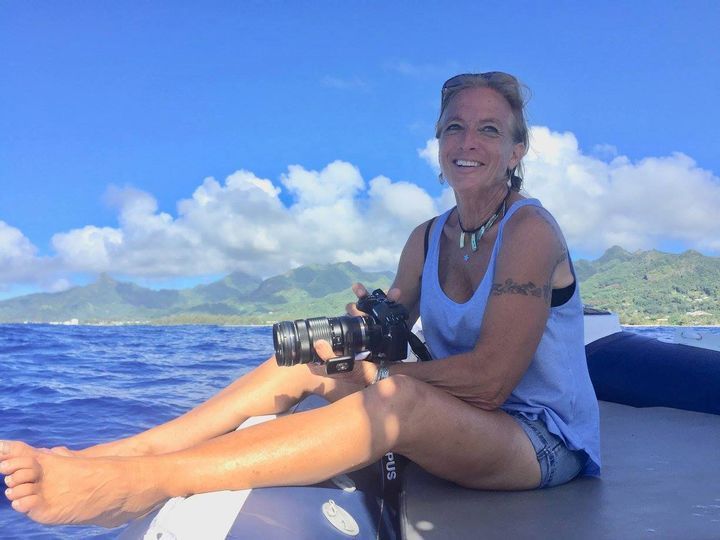
Image by Nan Daeschler Hauser/Facebook
As a marine biologist, Nan Hauser is used to swimming with whales. She has, after all, devoted her life to studying these gentle creatures. After so many years in the field, you’d think an expert like her would no longer be prone to surprises.
Just Another Day At The Office
In September 2017, Nan took a dive near the shore of Rarotonga, an island in the South Pacific. She was accompanied by a ship that tracked her path and sighted her moves via drone—just another typical day—until strange movements were picked up in the water ahead.
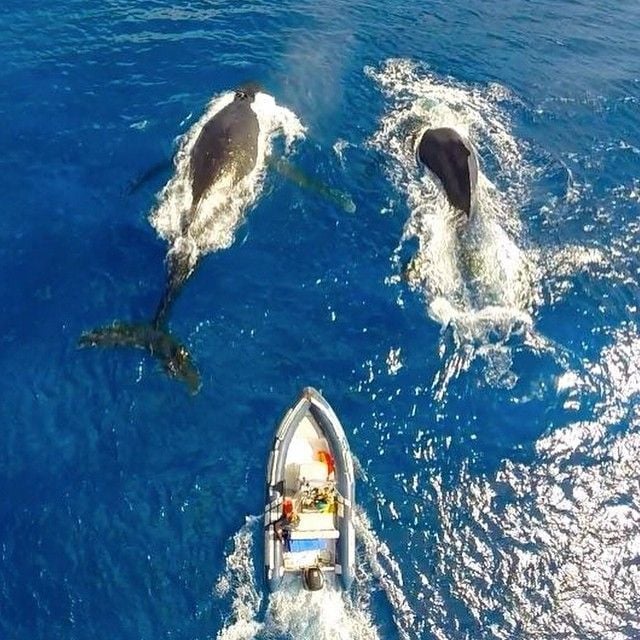
Image via @nanhauser/IG
A 50-foot male humpback weighing 23 tons was heading straight toward her. This is unusual behavior from whales, who generally try to stay away from people. She steeled herself and raised her camera lens.
Unusual Behavior Of The Whale
She was too busy trying to get a good shot of the creature to notice how fast and how close it was coming. By the time she realized, it was already too late to get out of its way. She stood her ground—or water—and waited to see what would happen next.
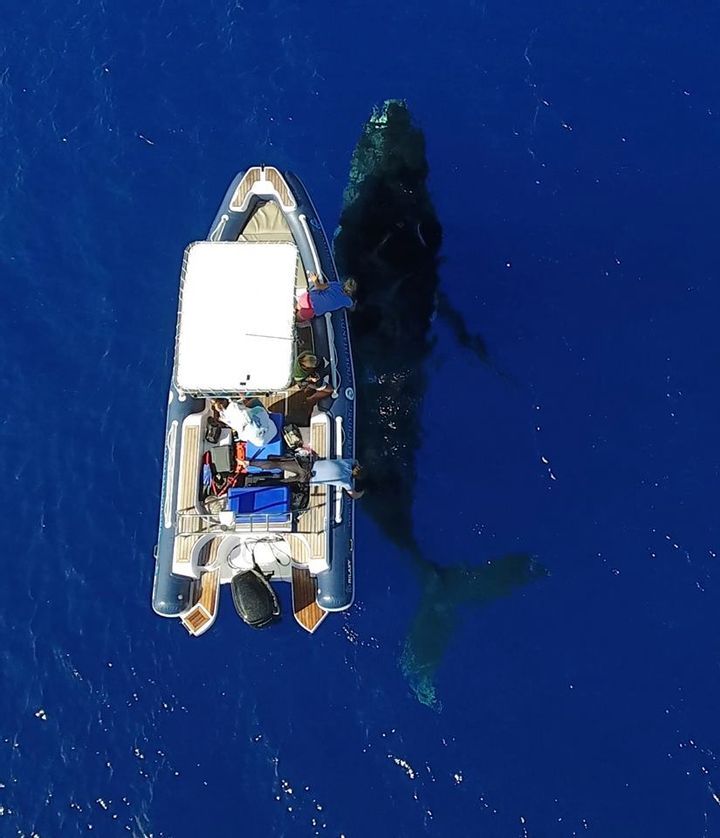
Source: Nan Daeschler Hauser/ Facebook
The humpback knocked her on her side, hard. Whales are generally not considered dangerous to people who know what they’re doing. They’ve been known to expose their backs as a defensive posture, but then they normally go on their way. Needless to say, this whale wasn’t behaving the way most whales do.
What’s Happening?
Instinctively, Nan tried to swim back towards her vessel. Each time she made a move towards it, she was pushed away. There was no way out of the situation and no time to figure out what the whale was trying to say with its strange behavior.
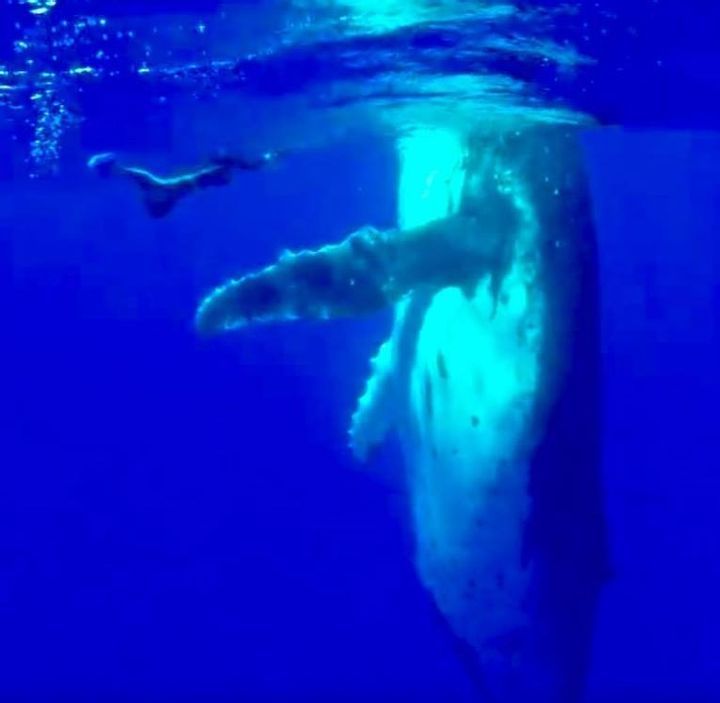
Image by Nan Daeschler Hauser/ Facebook
Hauser knew that humpback whales prefer to stay a fair distance away from humans. But this one was in the batting range. She began to wonder if something was wrong with it. Either way, there was nothing she could do in her current position.
Nan Was Trapped
For several minutes the humpback wouldn’t stop bumping Nan with a closed mouth. The whale dragged her away from the boat and covered her under its fin. Nan tried to back up, but the whale was too large and too strong.
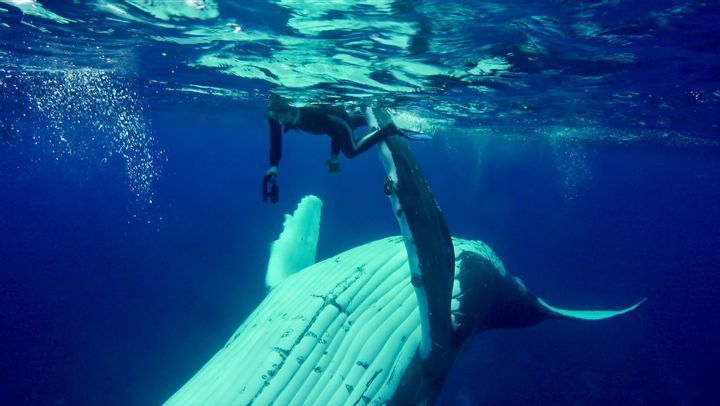
Image by Nan Daeschler Hauser/ Facebook
The marine biologist had never experienced this kind of interaction before, nor had she ever heard of a whale becoming aggressive. One wrong move could have resulted in serious injury—whether the whale intended to hurt her or not.
Damage
Over and over, she felt it bump against her. One good hit would have potentially broken her bones and ruptured her internal organs. She felt immeasurably fragile in the shadow of this mighty creature.
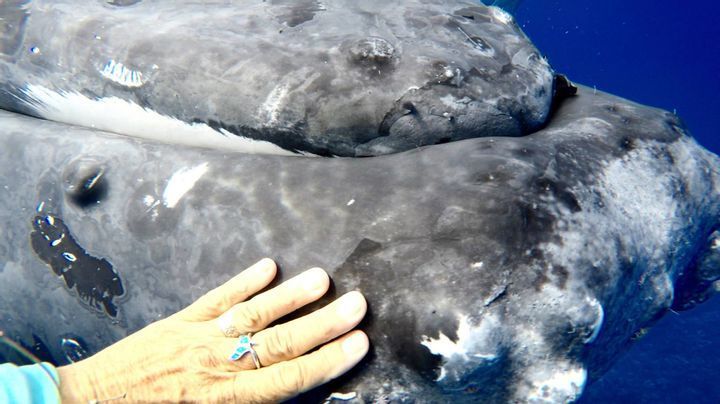
Image by Nan Daeschler Hauser/ Facebook
Nan kept trying to escape, but the whale only pushed her back further, away from the boat. She had no idea what to do next, so she did the only thing she could do: nothing.
Staying Still
She thought the best course of action would be to stay still. If she stayed put, there was a chance that the whale would lose interest and stop its ramming. Nan tried not to make any sudden movements and played dead as best she could.

Image by Nan Daeschler Hauser/ Facebook
Fighting her fear, Nan relaxed her body and stopped struggling. She just hoped that by letting her guard down, she wasn’t opening herself up to getting knocked unconscious, which would have been fatal so far under the waves. It was a critical moment.
She Remained Calmed
The whale did not relent, but the stillness gave Nan time to think. After gathering her wits, she tried to position herself nearer to the whale’s head. This was the place furthest from the most dangerous place—the whale’s tail and flippers.
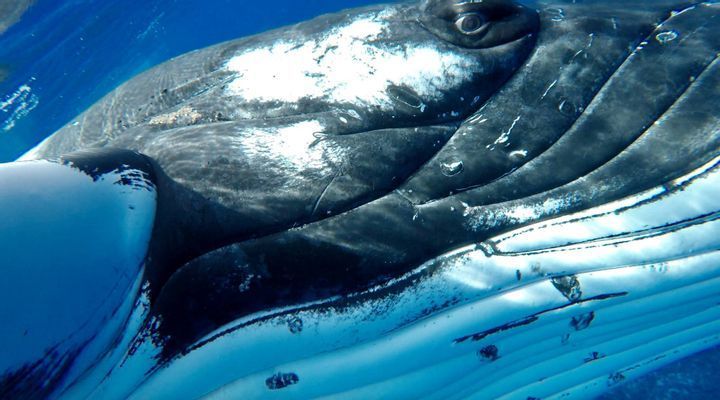
Image by Nan Daeschler Hauser/ Facebook
A humpback whale doesn’t have teeth or jaws, so it can’t bite. It only has a soft, spongy material in its mouth called baleen. This acts as a filter for the whale, allowing them to pick up fish and krill as they swim.
A Terrifying Encounter
Nan used to joke that she was more afraid of creepy-crawlies and little things with wings over large, powerful creatures like whales. Here at the mercy of this colossal underwater creature, she was beginning to entertain a newfound fear.
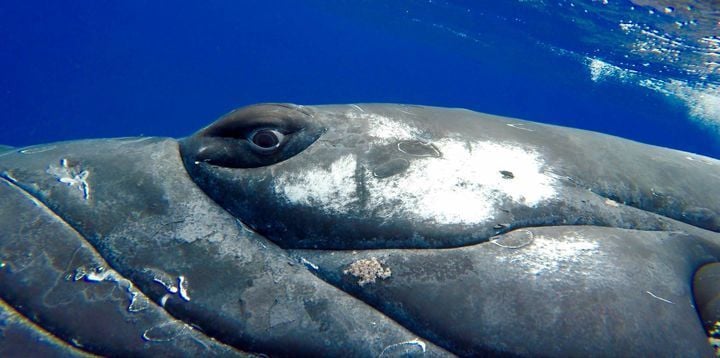
Image by Nan Daeschler Hauser/ Facebook
Was she seeing a new side to these animals? Had all she’d known about them been wrong? Was her ignorance about to get her killed? The situation seemed hopeless.
Losing Hope
As the whale continued to butt her further out into the ocean, she continued to hit the shutter on her camera. At least, she thought, I’ll get some good pictures out of this experience. Nan wasn’t completely alone under the waves. She was accompanied by another less experienced diver.
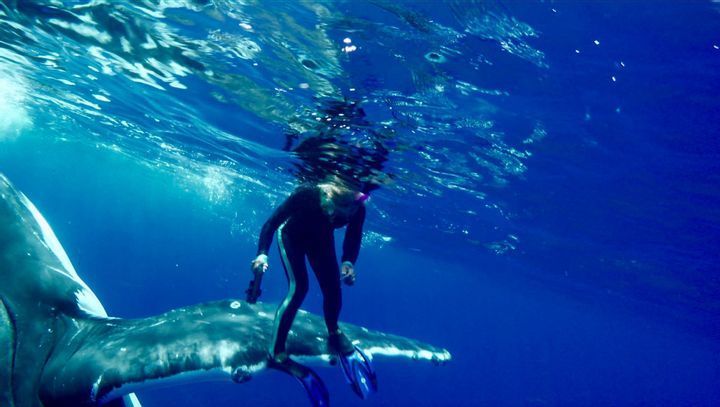
Image by Nan Daeschler Hauser/ Facebook
Unfortunately, partly due to his inexperience and partly because of how calm Nan had been acting, he had no idea she needed help. Even if Nan had managed to signal for backup, the power of the cetacean would have overwhelmed them both. She was alone in her struggle.
A View From The Deck
Meanwhile, back on the boat, the crew was becoming concerned. They could tell that something was wrong, but just like Nan, they were powerless to do anything about it.
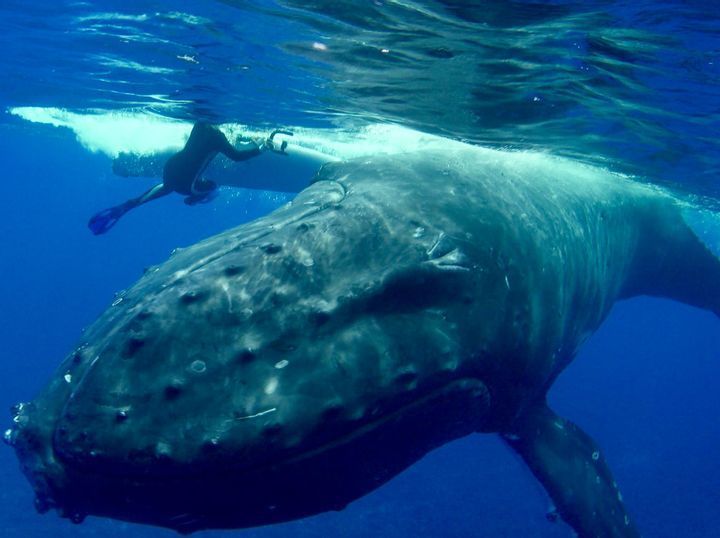
Image by Nan Daeschler Hauser/ Facebook
They watched in confusion as the marine biologist was being dragged away from the safety of the boat by one of the very creatures she had known, loved, and studied all her life.
More Company
The suspense was unbearable. To make things worse, Hauser spotted another humpback whale approaching from a distance. Just like the first, it was coming in fast.
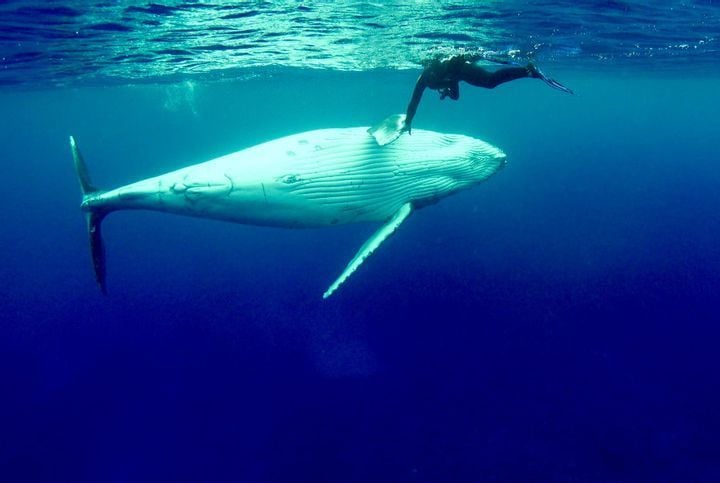
Image by Nan Daeschler Hauser/ Facebook
Although she knew well that whales were amiable animals and that they tended to travel in groups, the sight of the second massive whale caught her by surprise. Worse, it was displaying the same strange behavior. She readied herself for another knock.
The New Humpback Whale
The second whale broke off and headed to the surface, where it repeatedly smashed its tail against the waves. More odd behavior. She had never seen whales acting so aggressively and so spontaneously.

Image by Nan Daeschler Hauser/ Facebook
After slapping the surface, the second whale would drop back down and lash out at something behind its back. Between two agitated whales, Nan had no idea what to make of her predicament.
Non-Stop Whipping
Humpback whales sometimes travel to the South Pacific during winter months to breed and rear their young. They live in groups, or pods, to help defend their calves from predators. But Nan didn’t see any calves around either of the whales.
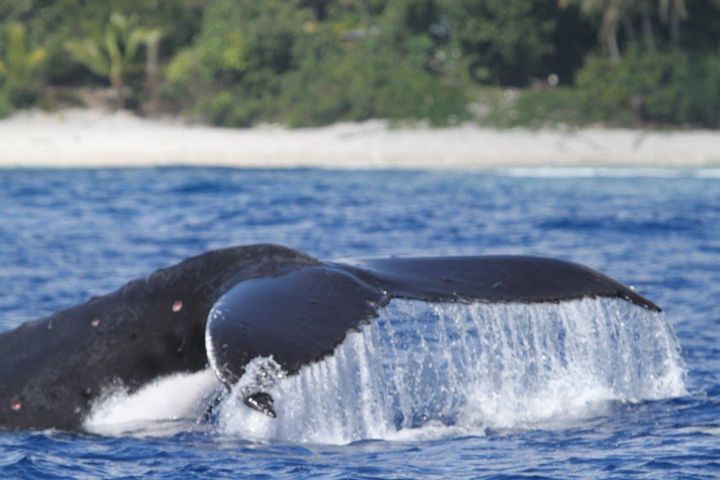
Image by Nan Daeschler Hauser/ Facebook
However, from the corner of her eye, she registered a shadow moving around in the water. Could it have been their calf? How could she have missed it? It was moving too fast for her to get another look.
The Diver’s Bruises and Bumps
After only ten minutes of respite, the first whale rammed into her again. Its barnacles bounded her like knuckles, leaving her bruised and sore. Nan was running out of strength.
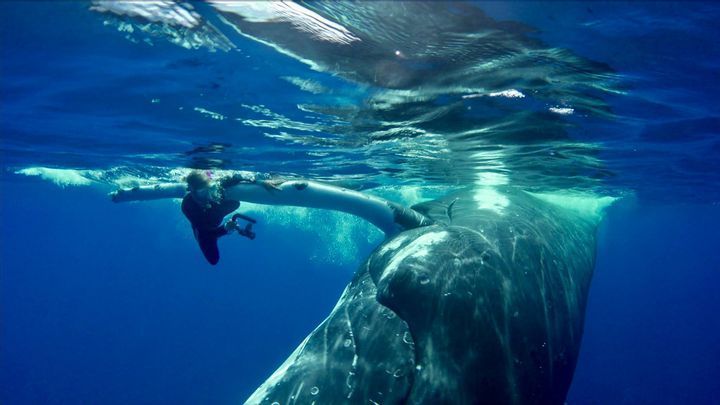
Image by Nan Daeschler Hauser/ Facebook
Again Nan tried to remain as calm as she could. Again the whale jabbed her, knocked her with its abdomen, and blocked her from the surface with its powerful pectoral fins. Nan was baffled.
Guarding Her
The whale hadn’t been trying to push Nan away. It was trying to keep Nan close. Suddenly, it all made sense. She turned her fears away from the whale and onto the shadow on the other side of its body.
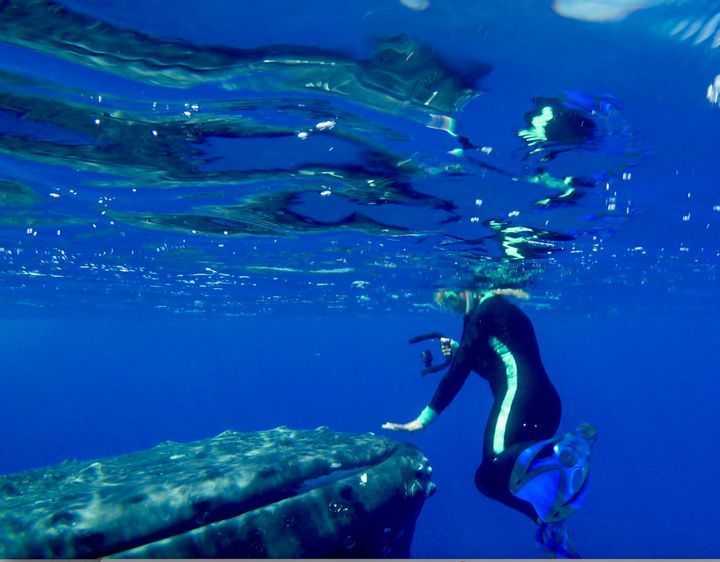
Image by Nan Daeschler Hauser/ Facebook
She spotted a third tail fin, but this one was moving side-to-side, not up and down. This was no whale calf. In fact, it was no whale at all.
It’s A Man-Eating Predator
Nan finally saw the cause of the two whales’ agitation—it was a tiger shark. The whales weren’t trying to hurt her. They were trying to protect her from a greater threat—and it was heading straight for her.
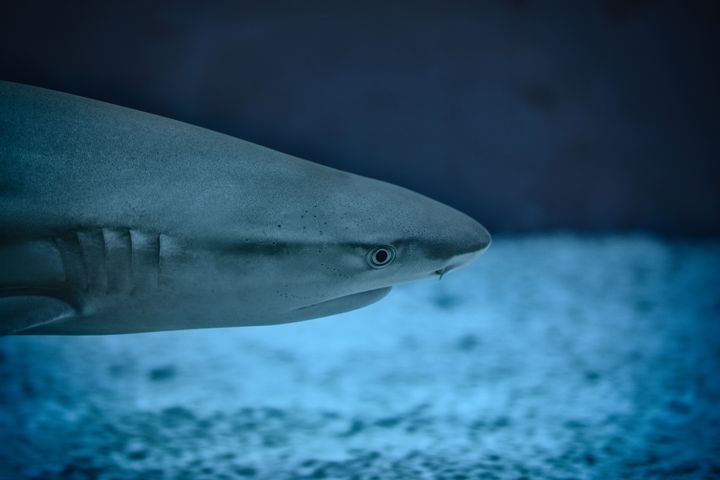
Image by Nan Daeschler Hauser/ Facebook
Tiger sharks are known to attack humans, and their ability to swim long distances makes them highly efficient predators. An adult tiger shark can grow from 6.5 to 8 feet long.
Swimming Rush to The Vessel
Many people believe that great white sharks are the most dangerous kind of shark. But this is not so. The chances of being bitten by a great white shark are probably smaller than you think.
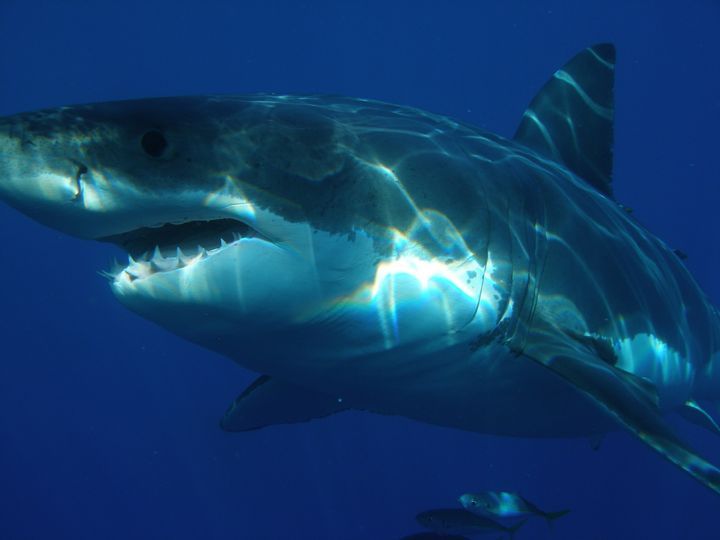
Image by skeeze/ Pixabay
Rather than taking a single chunk as a great white would, a tiger shark doggedly ravages its prey, striking with bite after bite. Knowing this, Nan realized that she and her assistant were one bad move away from being torn apart.
Successful Escape
With the two whales’ combined effort, the shark was distracted enough for Nan and her companion to make it to the side of the boat. While she was climbing aboard, the marine biologist told her co-workers about the tiger shark close by.
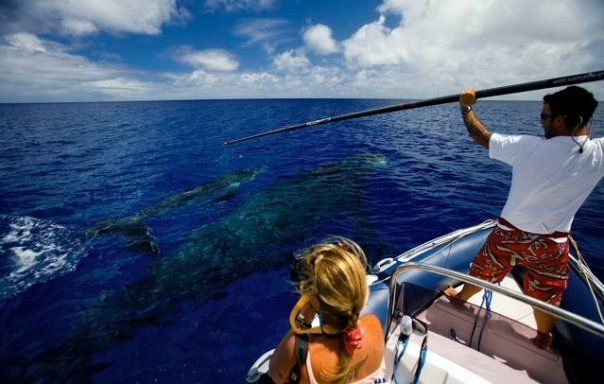
Image by Nan Daeschler Hauser/ Facebook
Much later, while Nan was skimming through her footage, she realized that the whales had been moving defensively around her in order to keep the tiger shark at bay. The whales saved her life.
Altruistic Behavior of Whales
Even after the pair were safely aboard, the whale stuck around. It patrolled around the boat, presumably to make sure the shark was nowhere near. After a few moments, the humpback whales returned to the sea.
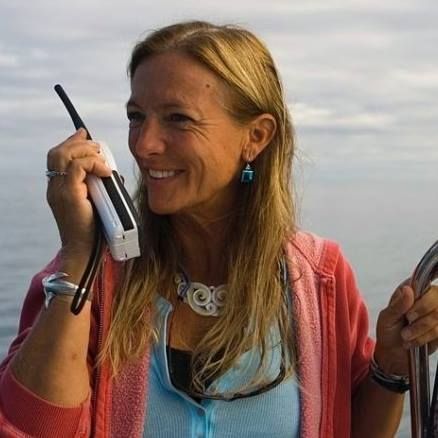
Image by Nan Daeschler Hauser/ Facebook
Before it left, it blew a farewell blast of water from its blowhole. Nan watched in amazement. It sounds like something out of a kid’s story with a happy ending, doesn’t it?
It’s Hard to Believe
To Nan, this was more than an experience. It was a discovery. She had learned something about the creatures. Not only that, but she had evidence to back her up.
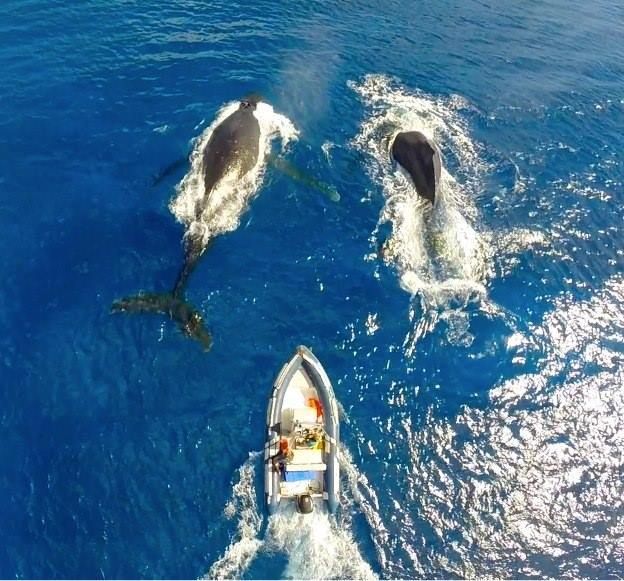
Image by Nan Daeschler Hauser/ Facebook
In a 2018 interview with NPR, Nan Hauser said, “If someone told me this story, I wouldn’t believe it. If it hadn’t been me, if it hadn’t been filmed from three different angles, I wouldn’t believe it,” she explained.
Defenders of The Sea
Humpback whales are omnivores. They don’t usually attack other sea creatures. On the contrary, whales are known for protecting other species of whales, dolphins, and seals. In fact, a scientific paper describing the phenomenon of humpback whales protecting other species of animals was recently published.
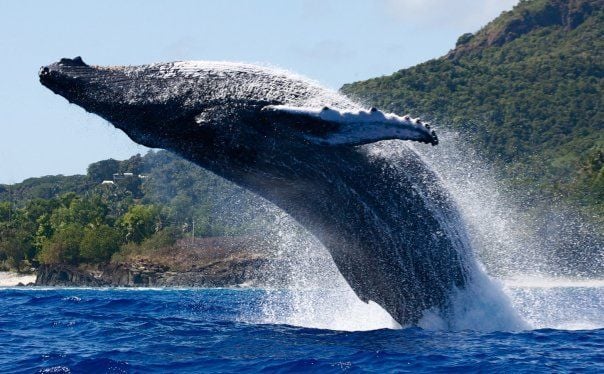
Image by Nan Daeschler Hauser/ Facebook
In 2016, researchers documented 115 cases from the past 60 years involving whales saving creatures, like dolphins and seals, from other predatory animals. They had never before been able to document a case with humans. Researchers are still looking for explanations for this altruistic behavior.
Others Can’t Believe Her Story
Other marine biologists were fascinated by Nan’s experience. They found her experience compelling. Most believed that her conclusion about the humpback’s selfless behavior was correct. While many scientists have long observed altruistic behavior from whales, many remain skeptical of Hauser’s experience.
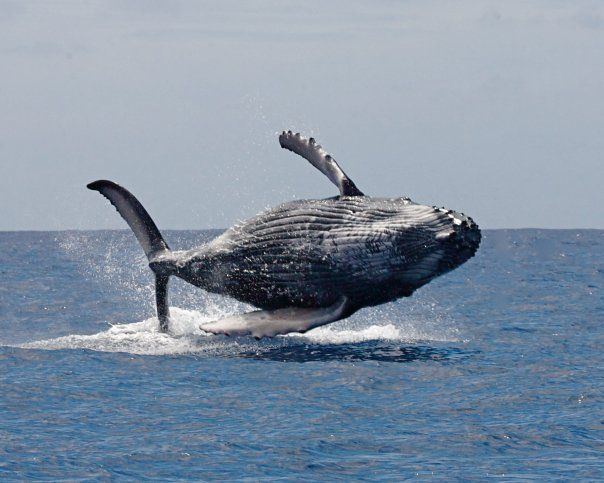
Image by Nan Daeschler Hauser/ Facebook
They argue that it is impossible for us to know the humpback whales’ true intentions. They believe their behavior might not have had anything to do with the tiger shark’s presence. Whales have never been seen helping out humans before this.
Her Story Became Well-Known In The Community
Though some critics may disagree with her conclusions, Hauser is confident in her own research and trusts her own instincts. Her close encounter with the humpback whales and the tiger shark was rare. Fortunately, as three different cameras captured the incident, her story comes with a good deal of credibility.
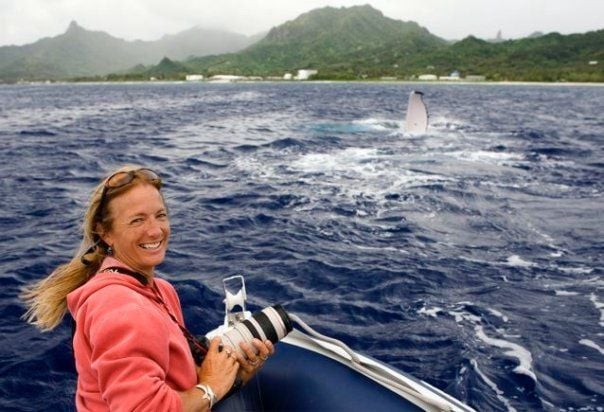
Image by Nan Daeschler Hauser/ Facebook
This whale’s behavior is consistent with what scientists already know about humpback whales’ behavior toward other sea animals. Plus, the footage clearly shows that the humpback whale was moving the shark away from her.
Footage From Different Angle
All of Nan’s experiences were captured on film—from multiple viewpoints. There was footage from her own camera, footage captured by the drone, and footage taken by the diver in the water with her, in addition to various other angles caught from the research vessel.
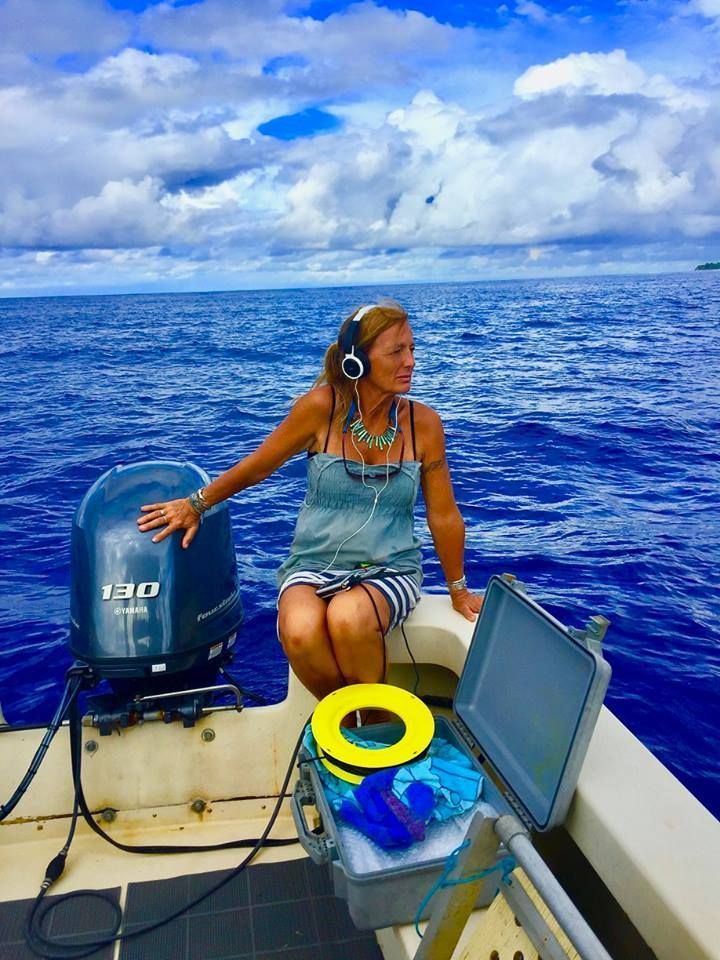
Image by Nan Daeschler Hauser/ Facebook
The video footage from all the camera angles clearly shows that the humpback whale was moving her out of the way of the tiger shark. Although she didn’t see the shark right away, the footage says it all.
Compassion Vs. Altruism
While it may seem like the whale had saved Nan out of compassion, the use of the word “compassion” has specific connotations in the scientific world. Nan wanted to avoid a debate, so she chose her words carefully. Instead, she called the whales “altruistic”.

Image by Nan Daeschler Hauser/ Facebook
Why not “compassion”? Compassion is an emotional quality exclusive to humans, whereas altruism is believed to be present in some animals. It is hard to prove compassion between animals, so Nan described her savior humpback whales as “altruistic”. In addition, there are plenty of documented cases of whales proving that they are altruistic.
Is it Compassion or Instinct?
When asked by National Public Radio, Pitman stated that there are different factors in compassionate and altruistic behavior. “When a human protects an imperiled individual of another species, we call it compassion. If a humpback whale does so, we call it instinct. But sometimes the distinction isn’t all that clear.”
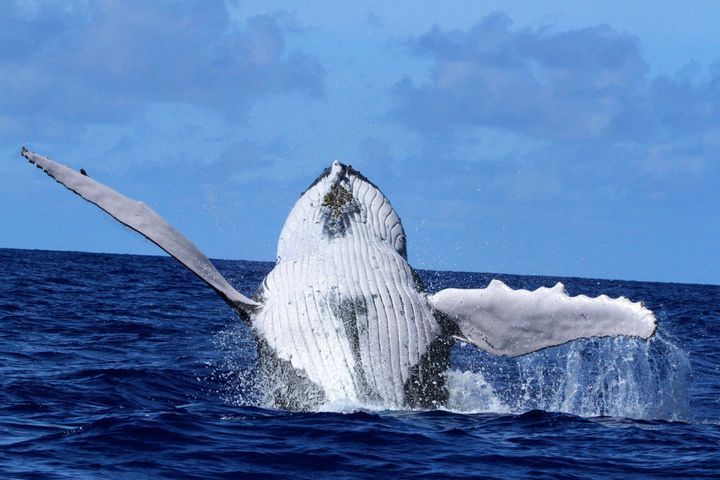
Image by Nan Daeschler Hauser/ Facebook
While it might seem that this whale was acting out of compassion, it was, in fact, trying to save Nan because it perhaps mistakenly thought that she was a baby whale that needed protection.
New Whale Encounter
After she almost lost her life, Nan Hauser returned to the water, confident, knowing that help was always around if she needed it. The sun was shining, boats were in the water, and she was once again diving off the shores of Rarotonga. Then suddenly, she saw a familiar figure approaching.
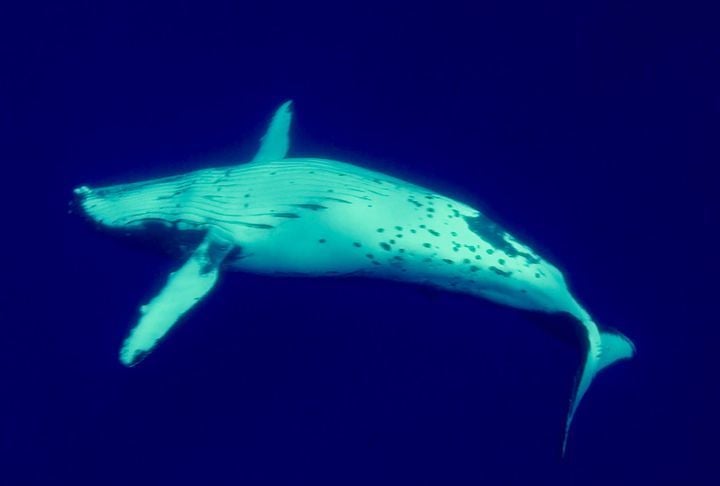
Image by Nan Daeschler Hauser/ Facebook
Almost immediately after entering the water, a female humpback started swimming toward her. However, this time it didn’t seem like she was in for a ramming. Instead, it seemed to be approaching her with giddy excitement.
Giving Her A Hug
The marine biologist cautiously observed, hoping for a clue as to what she was going to do next. It swam towards her, four feet away, and then did something that made her gasp. The whale opened her pectoral fins as if to hug her.
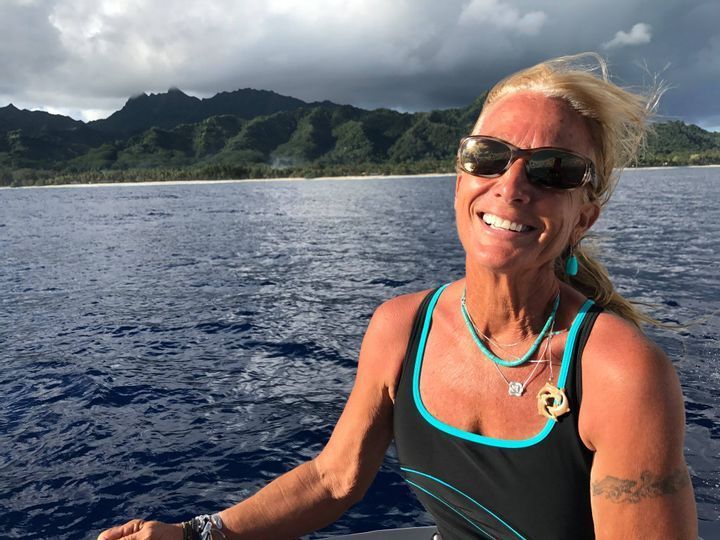
Image by Nan Daeschler Hauser/ Facebook
That day happened to be her birthday. Two different massive creatures had shown her love in a way she had not expected. No present in the world could have made her happier.
Giving Back The Love
The Cook Islands are now designated as an international whale sanctuary, partly thanks to the work of Nan Hauser. For many years Nan worked to restrict commercial whaling in the country’s 772,000 square miles territorial waters.
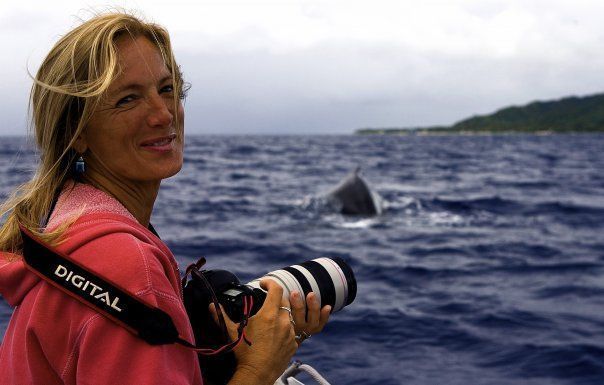
Image by Nan Daeschler Hauser/Facebook
Hauser protects the territory from the negative effects of whalers by petitioning government officials. No one can say for sure if Nan has always been a hero, but the whale did get the chance to thank her directly in 2017.
